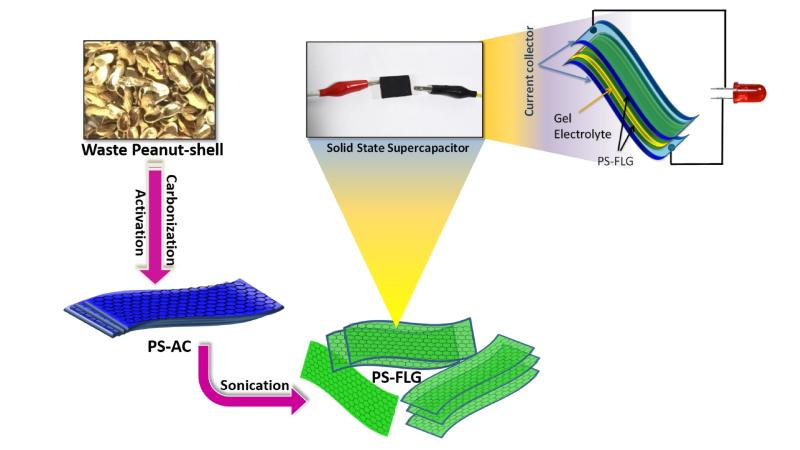
In this technology driven world, our quest for better, stronger, smaller, sleeker and more powerful devices has its effect on the environment we live in. Often, sourcing advanced materials to build the next best gadget ends up being unsustainable and hence, we must shift our mentality from one of ‘use-and-throw’ to ‘reuse-and-recycle’. This encompasses reusing all forms of waste, including agricultural waste. In an attempt to fill two needs with one deed, scientists at the Institute of Nano Science and Technology (INST), Mohali, Punjab, have devised a scalable and sustainable solution that may revolutionise energy storage devices, whilst tackling the problem of agricultural waste.
“Waste recycling worldwide is a major concern since landfilling is the most common way of dealing with solid agricultural waste in developing countries like India. On the other hand, biomass wastes are an abundant source of carbon, which is emerging as an alternative to green energy storage. Merging these two concerns throws some light on the focus of this project”, says Dr. Ramendra Sundar Dey from INST, who led this research.
Graphene, an allotrope of carbon and called the ‘wonder material’ due to its electrical and mechanical properties, is now evolving as an alternative to conventional energy storage devices like batteries and supercapacitors. High-quality graphene is currently fabricated by inefficient and unsustainable methods. “In most cases, hazardous and costly chemicals are used for graphitization - a method of degrading material by exposure to elevated temperatures. Large-scale production using this type of method will often lead to contamination of water bodies. Also, the final product may not always be reagent-free and may interfere with the purity of the material”, comments Dr. Dey.
In this study, the researchers describe a sustainable method to manufacture high-quality graphene nanosheets using waste peanut shells. The shells are ‘carbonised’ (an organic substance is converted into carbon) and processed to form small, low-volume pores that increase the surface area available for chemical reactions. The activated carbon material undergoes ‘mechanical exfoliation’, a common process that involves subjecting it to sound waves of enough energy to agitate the material into forming a mechanically and electrically stable honeycomb lattice structure, akin to graphene. The researchers then tested the electrochemical performance of the resulting material, called peanut shell derived exfoliated few-layer graphene (PS-FLG). They also tested PS-FLG by coating it onto sheets of indium tin oxide, and assembled with a gel electrolyte to form a solid state supercapacitor.
After suitable tests, the researchers found that the graphene from peanut shells had extremely high specific surface area - a desired parameter for better penetration of electrolyte ions, fast propagation and storage. The capacitor with PS-FLG also demonstrated 6 times higher energy density and 3.75 times higher power density than a similar morphology of few-layer graphene-like nanosheets achieved from waste coconut shell.
The researchers are now in the process of patenting the procedure. “The key parameter which makes it more sustainable than other methods is that the production is basically free of any hazardous chemicals or high-temperature furnace for graphitization. An age-old technique of mechanical exfoliation is introduced here for developing few-layer graphene. To the best of our knowledge, this technique makes our synthesis method stand out than the other methods involving agricultural waste materials”, says Dr. Dey.






